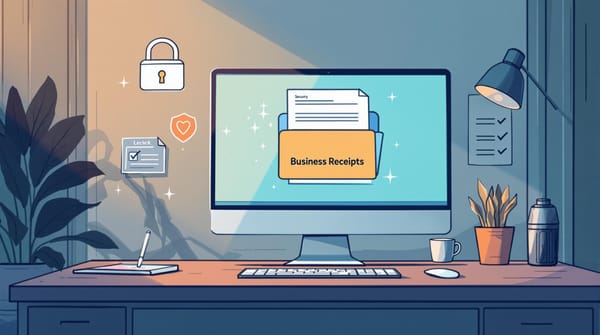The Ultimate Guide to Going Paperless for Accounting Firms in 2025

The accounting industry is undergoing a profound transformation as firms embrace digitalization and new technologies. The trend toward going paperless is more than just a passing phase; it's reshaping how accounting professionals operate in an ever-evolving world that prioritizes efficiency, sustainability, and flexibility. In today’s fast-paced environment, where clients demand quick responses and adaptability, modern accounting firms must harness the power of digital tools to remain competitive and efficient.
Why Going Paperless Matters
Transitioning to a paperless environment is vital for several reasons:
- Environmental Sustainability: Reducing paper consumption aligns with global sustainability efforts and demonstrates a firm’s commitment to eco-friendly practices, appealing to clients who value corporate social responsibility.
- Economic Efficiency: Going paperless can substantially lower operating costs by eliminating the need for physical storage, reducing printing and postage expenses, and cutting down the time staff spends managing paper documents.
- Enhanced Efficiency: Digitalization transforms processes through document management systems and cloud storage, which improve collaboration, streamline workflows, and provide remote access to information, resulting in quicker client deliverables and increased accuracy.
- Competitive Edge: Firms that adopt digital solutions can provide superior client experiences, attract tech-savvy clients, and position themselves as leaders in the industry.
This guide will explore essential steps to transition your accounting firm to a paperless operation, ensuring you are equipped to thrive in this evolving landscape.
Essential Steps to Transition to a Paperless Office
Transitioning to a paperless office can significantly enhance efficiency and reduce clutter. Here’s a systematic approach to ensure a smooth transition:
- Assess Current Document Workflows: Evaluate your existing document management and workflows. Identify where paper usage is highest and understand how documents flow through your organization to pinpoint inefficiencies and explore opportunities for improvement.
- Identify Areas of Improvement: After mapping workflows, look for bottlenecks, duplication of efforts, and unnecessary paperwork. Collaborate with your team for insights on optimizing communication, document sharing, and storage.
- Invest in Cloud-Based Accounting Software: Choose robust cloud-based accounting software for secure and accessible document storage. This provides a safe environment for your financial data and facilitates seamless collaboration among team members and clients. Ensure compliance with industry standards for data protection. Check out ReceiptsAI's receipt scanner, invoice scanner, and other tools to simplify your transition.
- Prioritize Document Scanning: Start digitizing existing paper documents, focusing on essential files first, and gradually move to older ones. Use high-quality scanners, establish a clear naming and tagging convention, and shred obsolete papers to maintain compliance and security.
- Implement a Robust Document Management System: A Document Management System (DMS) is vital for organizing electronic documents. Choose a system that fits your firm’s needs, allowing easy categorization, searchability, and access control. Train your staff to use it effectively.
- Regularly Review and Optimize: After implementing your paperless strategy, continually monitor systems and workflows for areas of improvement. Encourage feedback and stay updated on new technologies that can enhance your practices.
By diligently following these steps, your accounting firm can transition effectively to a paperless office, resulting in increased productivity and a more organized environment.
Choosing the Right Cloud-Based Accounting Software
Selecting appropriate cloud-based accounting software is essential for ensuring efficiency, security, and scalability. Here are key factors to consider:
- Security: Protect sensitive financial information as a top priority. Ensure the software employs robust security measures such as encryption, multi-factor authentication, and regular backups, complying with relevant regulations like GDPR and HIPAA.
- User-Friendliness: The software should feature an intuitive interface for quick adoption without extensive training. Look for customizable dashboards and clear data representations.
- Scalability: Choose software that can grow with your firm. This flexibility saves you from the hassle of switching systems later on.
- Integration Capabilities: Invest in software that integrates easily with current tools, minimizing manual data entry and fostering a streamlined workflow.
Popular Cloud-Based Accounting Platforms
Here’s a comparison of leading cloud-based accounting software options:
- QuickBooks Online: Known for its user-friendly interface, robust reporting features, and integration capabilities, particularly beneficial for small to mid-sized firms.
- Xero: Offers a simple user interface with strong bank reconciliation capabilities and extensive integration options.
- FreshBooks: Renowned for its invoicing and time-tracking features, making it a perfect choice for firms prioritizing ease of use.
- Zoho Books: A cost-effective solution with strong automation features, project tracking, and client portals—ideal for firms handling multiple clients.
Implementing a Document Management System
Setting up a robust Document Management System (DMS) is crucial in transitioning to a paperless environment. Key aspects include:
- Categorizing and Storing Documents: Develop a logical structure based on categories like client files and financial statements, and use consistent naming conventions alongside metadata tagging for better search functionality.
- Setting Access Permissions: Define user roles and ensure regular reviews of access permissions to maintain security.
- Ensuring Easy Retrieval: Implement advanced searching capabilities and a centralized dashboard for quick access to frequently used files.
- Enhancing Workflow and Collaboration: Utilize a DMS to reduce search time and facilitate document collaboration through real-time editing features.
- Tools and Technology: Explore platforms like M-Files, DocuWare, or SharePoint, and utilize Optical Character Recognition (OCR) technology for better functionality.
By focusing on these aspects, your accounting firm can benefit from improved efficiency and collaboration.
Reducing Paper Waste Through Electronic Billing and Communication
Businesses are increasingly adopting electronic billing and digital communication to minimize paper consumption. Key strategies include:
- E-Billing Systems: Transform invoicing processes by enabling firms to send and manage invoices electronically, speeding up receipt and review processes for clients—check ReceiptsAI’s invoice scanner here.
- Digital Communication Tools: Implement email, chat platforms, and video conferencing to replace traditional correspondence, freeing the need for printed documents.
- Tools and Practices: Invest in comprehensive e-billing platforms, utilize cloud storage, implement internal communication tools, and encourage video conferencing to decrease paper usage.
Encouraging clients to adopt electronic methods is crucial. Educate them on e-billing benefits, personalize communications, incentivize electronic adoption, and provide continual support. This inclusion promotes efficiency and satisfaction.
Setting Up an Effective Organization Structure
A well-structured electronic filing system enhances efficiency and access to essential documents. Strategies include:
- Create Main Folders and Sub-Folders: Establish a clear hierarchy with broad categories such as 'Client Files' and specific sub-folders to maintain order.
- Establish a Standardized Hierarchy: Ensure consistency across all employees for file organization and retrieval.
- Implement a Consistent Naming Convention: Choose a descriptive yet concise file naming structure for easy identification.
- Train Staff on the System: Conduct training sessions to familiarize your team with the new filing structure and emphasize consistency.
Investing in a well-organized electronic filing system enhances productivity and ensures streamlined document management.
Engaging and Training Staff for a Smooth Transition
Employee involvement and training are key to successfully transitioning to a paperless environment. Strategies for effective engagement include:
- Communicate the Vision: Clearly convey the benefits of a paperless office and share success stories from others.
- Involve Staff in Decision-Making: Solicit feedback and involve team members in discussions about the transition.
- Provide Comprehensive Training Programs: Organize tailored training sessions using various methods to accommodate different learning styles.
- Address Resistance Head-On: Listen to employee concerns and emphasize technology as a tool for enhancement.
- Create Resource Materials: Develop guides and video tutorials for staff reference.
- Offer Continuous Support: Designate tech champions for day-to-day concerns and establish an internal support channel.
- Maintain Open Lines of Communication: Regularly check in to gather feedback and keep everyone aligned.
- Celebrate Milestones: Recognize achievements along the transition journey to boost morale.
A smooth transition relies on engaging and training your team effectively. With continuous communication and support, your staff will feel empowered and excited to embrace the new systems.
Conclusion
Transitioning to a paperless accounting firm is not merely a choice but a vital step toward increased efficiency, sustainability, and security in today’s digital landscape. This guide emphasized numerous benefits of going paperless, such as enhanced document accessibility, improved team collaboration, and robust security for sensitive information.
Now is the time to take action. Start by assessing your current processes to identify areas for improvement. Encourage your team to explore digital tools, and set achievable goals for reducing paper usage. This ongoing journey towards digital transformation fosters heightened efficiency and environmental responsibility within your firm.
For additional support and resources, consider joining our upcoming webinars and workshops where industry experts will share insights on going paperless. Schedule a consultation with a digital transformation specialist to create a customized plan for your firm's needs. Don’t wait—embark on your journey towards a paperless office today and lead your firm into a more efficient, secure, and sustainable future!





